On this page
Bernd Heinrich
This page lists books written by Bernd Heinrich. The books are ordered chronologically with the most recent at the top. A number of books with forewords written by Bernd Heinrich are listed at the bottom of the page.
|
|
|
|
One Wild Bird at a Time: Portraits of Individual LivesBernd Heinrich
Houghton Mifflin Harcourt
2016
"In his modern classics One Man s Owl and Mind of the Raven, Bernd Heinrich has written memorably about his relationships with wild ravens and a great horned owl. In One Wild Bird at a Time, Heinrich returns to his great love: close, day-to-day observations of individual wild birds. There are countless books on bird behavior, but Heinrich argues that some of the most amazing bird behaviors fall below the radar of what most birds do in aggregate. Heinrich s passionate observations [that] superbly mix memoir and science lead to fascinating questions and sometimes startling discoveries. .... .An eminent biologist shares the joys of bird-watching and how observing the anomalous behaviors of individual birds has guided his research."
|
Buy from amazon.co.uk 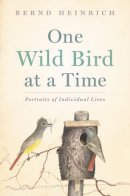
|
|
The Homing Instinct: Meaning & Mystery in Animal MigrationBernd Heinrich
Houghton Mifflin Harcourt
2014
"Home is the place we long for most, when we feel we have travelled too far, for too long. Since boyhood, acclaimed scientist and author Bernd Heinrich has returned every year to a beloved patch of woods in his native western Maine. But while it’s the pull of nostalgia that informs our desire to go back, what is it that drives the homing instinct in animals? Heinrich explores the fascinating science behind the mysteries of animal migration: how geese imprint true visual landscape memory over impossible distances; how the subtlest of scent trails are used by many creatures, from fish to insects to amphibians, to pinpoint their home; and how the tiniest of songbirds are equipped for solar and magnetic orienteering over vast distances. Most movingly, Heinrich chronicles the spring return of a pair of sandhill cranes to their pond in the Alaska tundra. With his marvellously evocative prose, Heinrich portrays the psychological state of the newly arrived birds, articulating just what their yearly return truly means, to the birds and to those fortunate enough to witness this transcendently beautiful ritual. ‘The Homing Instinct’ is an enchanting study of this phenomenon of the natural world, reminding us that to discount our own feelings toward home is to ignore biology itself."
|
Buy from amazon.co.uk 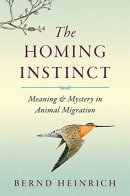
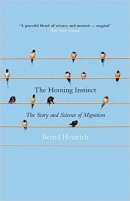
|
|
Life Everlasting: The Animal Way of DeathBernd Heinrich
Houghton Mifflin Harcourt
2012
"How does the animal world deal with death? And what ecological and spiritual lessons can we learn from examining this? Bernd Heinrich has long been fascinated by these questions, and when a good friend with a terminal illness asked if he might have his green burial at Heinrich's hunting camp in Maine, it inspired the acclaimed biologist and author to investigate. Life Everlasting is the fruit of those investigations, illuminating what happens to animals great and small after death. From beetles to bald eagles, ravens to wolves, Heinrich reveals the fascinating and mostly hidden post-death world that occurs around us constantly, while examining the ancient and important role we too play as scavengers, connecting death to life."
|
Buy from amazon.co.uk 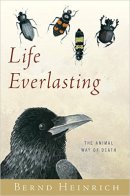
|
|
Field Notes on Science and NatureEditor: Michael R. Canfield
Harvard University Press
2011
Includes a chapter on Bernd Heinrich called Untangling The Bank.
"Once in a great while, as the New York Times noted recently, a naturalist writes a book that changes the way people look at the living world. John James Audubon's Birds of America, published in 1838, was one. Roger Tory Peterson's 1934 Field Guide to the Birds was another. How does such insight into nature develop? Pioneering a new niche in the study of plants and animals in their native habitat, Field Notes on Science and Nature allows readers to peer over the shoulders and into the notebooks of a dozen eminent field workers, to study firsthand their observational methods, materials, and fleeting impressions. .... And in essays abounding with fascinating anecdotes, the authors reflect on the contexts in which the notes were taken. Covering disciplines as diverse as ornithology, entomology, ecology, paleontology, anthropology, botany, and animal behavior, Field Notes offers specific examples that professional naturalists can emulate to fine-tune their own field methods, along with practical advice that amateur naturalists and students can use to document their adventures."
|
Buy from amazon.co.uk 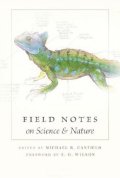
|
|
The Nesting Season: Cuckoos, Cuckolds, and the Invention of MonogamyBernd Heinrich
Harvard University Press / Belknap Press
2010
"Why are the eggs of the marsh wren deep brown, the winter wren's nearly white, and the gray catbird's a brilliant blue? And what in the DNA of a penduline tit makes the male weave a domed nest of fibers and the female line it with feathers, while the bird-of-paradise male builds no nest at all, and his bower-bird counterpart constructs an elaborate dwelling? These are typical questions that Bernd Heinrich pursues in the engaging style we've come to expect from him - supplemented here with his own stunning photographs and original watercolors. One of the world's great naturalists and nature writers, Heinrich shows us how the sensual beauty of birds can open our eyes to a hidden evolutionary process. Nesting, as Heinrich explores it here, encompasses what fascinates us most about birds - from their delightful songs and spectacular displays to their varied eggs and colorful plumage; from their sex roles and mating rituals to nest parasitism, infanticide, and predation. What moves birds to mate and parent their young in so many different ways is what interests Heinrich - and his insights into the nesting behavior of birds has more than a little to say about our own."
|
Buy from amazon.co.uk 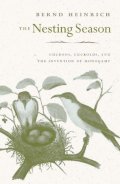
|
|
Summer World: A Season of BountyBernd Heinrich
Harper Collins / Ecco Press
2009
"How can cicadas survive and thrive at temperatures pushing 115 F? Do hummingbirds know what they're up against before they migrate over the Gulf of Mexico? Why do some trees stop growing taller even when three months of warm weather remain? With awe and unmatched expertise, Bernd Heinrich's Summer World never stops exploring the beautifully complex interactions of animals and plants with nature, giving extraordinary depth to the relationships between habitat and the warming of the earth."
|
Buy from amazon.co.uk 
|
|
The Snoring Bird : My Family's Journey Through a Century of BiologyBernd Heinrich
Harper Collins / Ecco Press
2007
"Although Bernd Heinrich's father, Gerd, a devoted naturalist, specialized in wasps, Bernd tried to distance himself from his "old-fashioned" father, becoming a hybrid: a modern, experimental biologist with a naturalist's sensibilities. In this remarkable memoir, the award-winning author shares the ways in which his relationship with his father, combined with his unique childhood, molded him into the scientist, and man, he is today. From Gerd's days as a soldier in Europe to the family's daring escape from the Red Army in 1945 to the rustic Maine farm they came to call home, Heinrich relates it all in his trademark style, making science accessible and awe-inspiring."
|
Buy from amazon.co.uk 
|
|
The Geese of Beaver BogBernd Heinrich
Harper Collins / Ecco Press
2004
"In the summer of 1998, award-winning writer and biologist Bernd Heinrich found himself the unwitting - but doting - foster parent of an adorable gosling named Peep. Good-natured, spirited Peep drew Heinrich into her world - one he found to be filled with as much color and drama as that of her human counterparts. And so, with a scientist's training and a nature lover's boundless curiosity and enthusiasm, Heinrich set out to observe and understand the travails and triumphs of the Canada geese, or honkers, living in the beaver bog adjacent to his rural Vermont home. His presence in the bog, at all hours, in all weather, became as commonplace as that of the local beavers and birds. The resident geese learned that Heinrich could be trusted, enabling him to watch and record their daily routines from up close. Heated battles over territory, mysterious nest raids, jealousy over a lover's inattention, all are recounted here in an engaging, anecdotal narrative that sheds light on how geese live and why they behave as they do. Far from staid or predictable, the lives of geese are packed with adventure and full of surprises."
|
Buy from amazon.co.uk 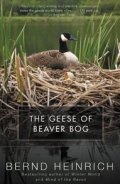
|
|
Bumblebee EconomicsBernd Heinrich
Harvard University Press
2004
Originally published in 1979. "In his new preface Bernd Heinrich ranges from Maine to Alaska and north to the Arctic as he summarizes findings from continuing investigations over the past twenty-five years - by him and others - into the wondrous 'energy economy' of bumblebees."
|
Buy from amazon.co.uk 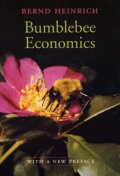
|
|
Winter World: The Ingenuity of Animal SurvivalBernd Heinrich
Harper Collins / Ecco Press
2003
"From flying squirrels to grizzly bears, and from torpid turtles to insects with antifreeze, the animal kingdom relies on some staggering evolutionary innovations to survive winter. Unlike their human counterparts, who must alter the environment to accommodate physical limitations, animals are adaptable to an amazing range of conditions. Examining everything from food sources in the extremely barren winter land-scape to the chemical composition that allows certain creatures to survive, Heinrich's Winter World awakens the largely undiscovered mysteries by which nature sustains herself through winter's harsh, cruel exigencies."
|
Buy from amazon.co.uk 
|
|
Why We Run: A Natural HistoryBernd Heinrich
Harper Collins
2002
"In Why We Run, biologist, award-winning nature writer, and ultramarathoner Bernd Heinrich explores a new perspective on human evolution by examining the phenomenon of ultraendurance and makes surprising discoveries about the physical, spiritual -- and primal -- drive to win. At once lyrical and scientific, Why We Run shows Heinrich's signature blend of biology, anthropology, psychology, and philosophy, infused with his passion to discover how and why we can achieve superhuman abilities."
|
Buy from amazon.co.uk 
|
|
Racing the Antelope: What Animals Can Teach Us about Running and LifeBernd Heinrich
Harper Collins / Ecco Press
2001
"In Racing the Antelope, Heinrich applies his characteristic blend of scientific inquiry and philosophical musing to a deft exploration of the human desire--even need--to run. His rich prose reveals what endurance athletes can learn about the body and the spirit from other athletes in the animal kingdom. He then takes you into the heart of his own grueling 100-kilometer ultramarathon, where he puts into practice all that he has discovered about the physical, spiritual - and primal - drive to win. At once lyrical and scientific, Racing the Antelope melds a unique blend of biology, anthropology, psychology, and philosophy with Heinrich's passion for running to discover how and why we run."
|
Buy from amazon.co.uk 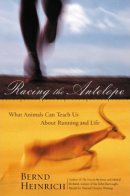
|
|
Mind Of The Raven: Investigations And Adventures With Wolf-BirdsBernd Heinrich
HarperCollins
2000
"An exploration of the intelligence of the Raven which addresses such questions as instinct vs. intelligence and the way the brain works. The findings are based on field observation, experiment and personal experience."
|
Buy from amazon.co.uk 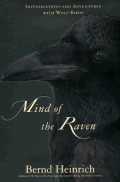

|
|
The Trees in My ForestBernd Heinrich
Harper Collins
1997
"The soaring majesty of a virgin forest and the intertwined relationships of plant, animal and man are the subject of Bernd Heinrich's lyrical elegy. Heinrich has spent a lifetime observing the natural world, and now he shares his vast knowledge and reflections on the trees of the Northeast woods and the rhythms of their seasons. From the DNA contained in an apple seed to the great choiring branches far beyond a young boy's reach, Heinrich explores a natural world in scientific and personal terms. Heinrich is a scientist, but his words speak with the power and subtle grace of a poet. He uses this gift, and his intimate knowledge of his 300 acres of Maine forest, to expose the forest's rhythms and in doing so, illustrates the vital but tenuous link among man, trees, birds, insects and all the creatures of the forest."
|
Buy from amazon.co.uk 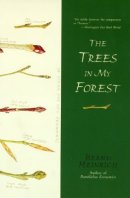
|
|
The Thermal Warriors: Strategies of Insect SurvivalBernd Heinrich
Harvard University Press
1996
"All bodily activity is the result of the interplay of vastly complex physiological processes, and all of these processes depend on temperature. For insects, the struggle to keep body temperature within a suitable range for activity and competition is often a matter of life and death. A few studies of temperature regulation in butterflies can be found dating back to the late 1800s, but only recently have scientists begun to study the phenomenon in other insects. In "The Thermal Warriors" Bernd Heinrich explains how, when and in general what insects regulate their body temperature and what it means to them. And he shows us, the ingenuity of the survival strategies insects have evolved in the irreducible crucible of temperature is astonishing: from shivering and basking, the construction of turrets (certain tiger beetles), and cooling with liquid faeces to stilting (some desert ants and beetles), "panting" in grasshoppers and "sweating cicada", and counter- and alternating-currents of blood flow for heat retention and heat loss."
|
Buy from amazon.co.uk 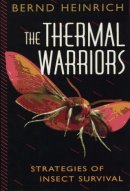
|
|
A Year in the Maine WoodsBernd Heinrich
Addison Wesley / Da Capo
1994
"Escapist fantasies usually involve the open road, but Bernd Heinrich's dream was to focus on the riches of one small place--a few green acres along Alder Brook just east of the Presidential Mountains. The year begins as he settles into a cabin with no running water and no electricity, built of hand-cut logs he dragged out of the woods with a team of oxen. There, alone except for his pet raven, Jack, he rediscovers the meaning of peace and quiet and harmony with nature--of days spent not filling out forms, but tracking deer, or listening to the sound of a moth's wings.Throughout this year when "the subtle matters and the spectacular distracts," Heinrich brings us back to the drama in small things, when life is lived consciously. His story is that of a man rediscovering what it means to be alive."
|
Buy from amazon.co.uk 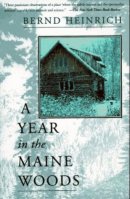
|
|
One Man's OwlBernd Heinrich
Princeton University Press
1993
This is an abridged paperback edition of the book that was originally published in 1987.
"This engaging chronicle of how the author and the great horned owl "Bubo" came to know one another over three summers spent in the Maine woods-and of how Bubo eventually grew into an independent hunter-is now available in an edition that has been abridged and revised so as to be more accessible to the general reader."
|
Buy from amazon.co.uk 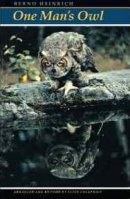
|
|
The Hot-Blooded Insects: Strategies and Mechanisms of ThermoregulationBernd Heinrich
Springer Verlag / Harvard University Press
1993
"Bernd Heinrich’s widely praised Bumblebee Economics set a high standard for scientifically accurate yet gracefully articulate writing about nature’s ingenious patterns, specifically thermoregulation. Hot-Blooded Insects takes a giant step forward by presenting an overview of what is now known about thermoregulation in all of the major insect groups, offering new insights on physiology, ecology, and evolution. The book is richly illustrated by the author’s exquisite sketches. By describing the environmental opportunities and challenges faced by moths and butterflies, grasshoppers and locusts, dungball rollers and other beetles, a wide range of bees, and other insects, Heinrich explains their dazzling variety of physiological and behavioral adaptations to what, for them, is a world of violent extremes of temperature. These mechanisms are apparent only through precise observations, but the small body size of insects poses large technical difficulties in whole-animal experiments, engendering controversy about the reliability of the data thus derived. Emphasizing an experimental approach, Heinrich pinpoints where he believes studies have gone astray, describing in detail both groundbreaking experiments and those which leave a reasonable doubt about the mechanism being interpreted. He reviews relevant work on the major taxa to show the underlying patterns that draw diversity together, opines on current controversies, and identifies questions that call for further study."
|
 |
|
An Owl in the House: A Naturalist's DiaryBernd Heinrich
Joy St Books
1990
"An invitation for young naturalists to share in the experience of watching a great horned owlet become a mature bird. This day by day journal charts the young owl's development and is a chronicle of how the author and "Bubo" come to know each other over three summers spent in the Maine woods. A story in itself, this also provides young naturalists with an example of the process of scientific observation and discovery, and shows them how to go about keeping their own field journal."
|
Buy from amazon.co.uk 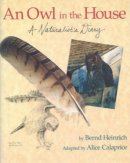
|
|
Ravens in WinterBernd Heinrich
Summit Books
1989
"A fascinating and important work of ornithology, which led E.O. Wilson to call it one of the most interesting discoveries I've seen in animal sociobiology in years, Ravens In Winter is a scientist s impassioned study to understand the mysterious social habits of one of nature s most formidable birds, the raven. Why do ravens, generally understood to be solitary creatures, share food between each other during winter? This was the question Bernd Heinrich asked himself as he was observing another one of his prime research subjects, the highly social bumblebee. And it was during these trips to Maine, the site of much of his research, where he first noticed this unusual behavior of ravens. From an evolutionary perspective, the raven's willingness to share food challenged conventional wisdom. There was no biological imperative, it seemed, to their communal spirit. The more Heinrich observed their habits, the more odd the bird's behavior became. What started as mere curiosity turned into an impassioned research project, and Ravens In Winter, the first research of its kind, explores the fascinating biological puzzle of the raven s rather unconventional social habits."
|
Buy from amazon.co.uk 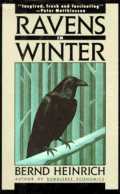
|
|
One Man's OwlBernd Heinrich
Princeton University Press
1987
Original hardback publication. An abridged paperback edition was published in 1993.
|
Buy from amazon.co.uk 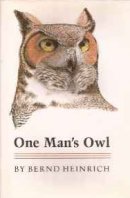
|
|
In a Patch of Fireweed: A Biologist's Life in the FieldBernd Heinrich
Harvard University Press
1984
"Why would a grown man chase hornets with a thermometer, paint whirligig beetles bright red, or track elephants through the night to fill trash bags with their prodigious droppings? Some might say-to advance science. Heinrich says-because it's fun. Bernd Heinrich, author of the much acclaimed Bumblebee Economics, has been playing in the wilds of one continent or another all his life. In the process, he has become one of the world's foremost physiological ecologists. With In a Patch of Fireweed, he will undoubtedly become one of our foremost writers of popular science. Part autobiography, part case study in the ways of field biology, In a Patch of Fireweed is an endlessly fascinating account of a scientist's life and work. For the author, it is an opportunity to report not just his results but the curiosity, humor, error, passion, and competitiveness that feed into the process of discovery. For the reader, it is simply a delight, a rare chance to share the perceptions of an unusual mind fully in tune with the inner workings of nature. Before his years of research in the woodlands and deserts of North America, the New Guinea highlands, and the plains of East Africa, Heinrich had a sense of the wild that few people in this century can know. He tells the whole story, from his refugee childhood hidden in a German forest, eating mice fried in boar fat, to his ongoing research in the woods surrounding his cabin in Maine."
|
Buy from h/b amazon.co.uk 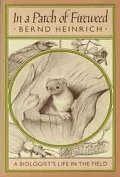
Buy from p/b amazon.co.uk
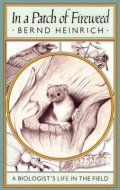
|
|
Insect ThermoregulationBernd Heinrich
Wiley
1981
|
Buy from amazon.co.uk 
|
|
Bumblebee EconomicsBernd Heinrich
Harvard University Press
1979
|
Buy from amazon.co.uk 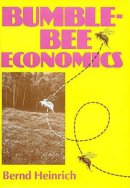
|
|
|
Books with a foreword/introduction by Bernd Heinrich
|
|
|
What Should a Clever Moose Eat?: Natural History, Ecology, and the North WoodsJohn Pastor
Foreword: Bernd Heinrich
Island Press
2016
"In What Should a Clever Moose Eat?, John Pastor explores the natural history of the North Woods, an immense and complex forest that stretches from the western shore of Lake Superior to the far coast of Newfoundland. The North Woods is one of the most ecologically and geologically interesting places on the planet, with a host of natural history questions arising from each spruce or sugar maple. From the geological history of the region to the shapes of leaves and the relationship between aspens, caterpillars, and predators, Pastor delves into a captivating range of topics as diverse as the North Woods themselves. Through his meticulous observations of the natural world, scientists and non-scientists alike learn to ask natural history questions and form their own theories, gaining a greater understanding of and love for the North Woods, and other natural places precious to them. In the tradition of Charles Darwin and Henry David Thoreau, John Pastor is a joyful observer of nature who makes sharp connections and moves deftly from observation to theory. Take a walk in John Pastor's North Woods, you'll come away with a new appreciation for details, for the game trails, beaver ponds, and patterns of growth around you, and won't look at the natural world in the same way again."
|
Buy from amazon.co.uk 
|
|
Dog Days, Raven NightsJohn Marzluff and Colleen Marzluff
Foreword: Bernd Heinrich
Yale University Press
2011
"Twenty years ago, fresh out of graduate school and recently married, John and Colleen Marzluff left Arizona for a small cabin in the mountains of western Maine. Their mission: to conduct the first-ever extensive study of the winter ecology of the Common Raven under the tutelage of biologist Bernd Heinrich. Drawing on field notes and personal diaries, they vividly and eloquently chronicle their three-year endeavour to research a mysterious and often misunderstood bird - assembling a gigantic aviary, climbing sentry trees, building bird blinds in the forest, capturing and sustaining 300 ravens as study subjects, and enduring harsh Maine winters in pursuit of their goal. They also share the unique challenges and joys of raising, training, and racing the sled dogs that assisted them in their work. Accompanied by Evon Zerbetz's lovely linocut illustrations, "Dog Days, Raven Nights" is a fascinating, behind-the-scenes look at the adventures of field science and an insightful exploration of the nature of relationships, both animal and human."
|
Buy from amazon.co.uk 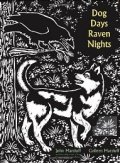
|
|
Egg & Nest Rosamond Purcell, Linnea Hall, Rene Corado
Introduction:Bernd Heinrich
Harvard University Press
2008
"The beauty of the robin's egg is not lost on the child who discovers the nest, nor on the collector of nature's marvels. Such instances of wonder find fitting expression in the photographs of Rosamond Purcell, whose work captures the intricacy of nests and the aesthetic perfection of bird eggs. Mining the ornithological treasures of the Western Foundation of Vertebrate Zoology, Purcell produces pictures as lovely and various as the artifacts she photographs. The dusky blue egg of an emu becomes a planet. A woodpecker's nest bears an uncanny resemblance to a wooden shoe. A resourceful rock dove weaves together scrap metal and spent fireworks. A dreamscape of dancing monkeys emerges from the calligraphic markings of a murre egg. Alongside Purell's photographs, Linnea Hall and Rene Corado offer an engaging history of egg collecting, the provenance of the specimens in the photographs, and the biology, conservation, and ecology of the birds that produced them. They highlight the scientific value for understanding and observing birds in the wild, as well as the aesthetic charge they carry for us.How has evolution shaped the egg or directed the design of the nest? How do the photographs convey such infinitesimal and yet momentous happenstance? The objects in "Egg and Nest" are specimens of natural history, and in Purcell's renderings, they are also the most natural art."
|
Buy from amazon.co.uk 
|
|